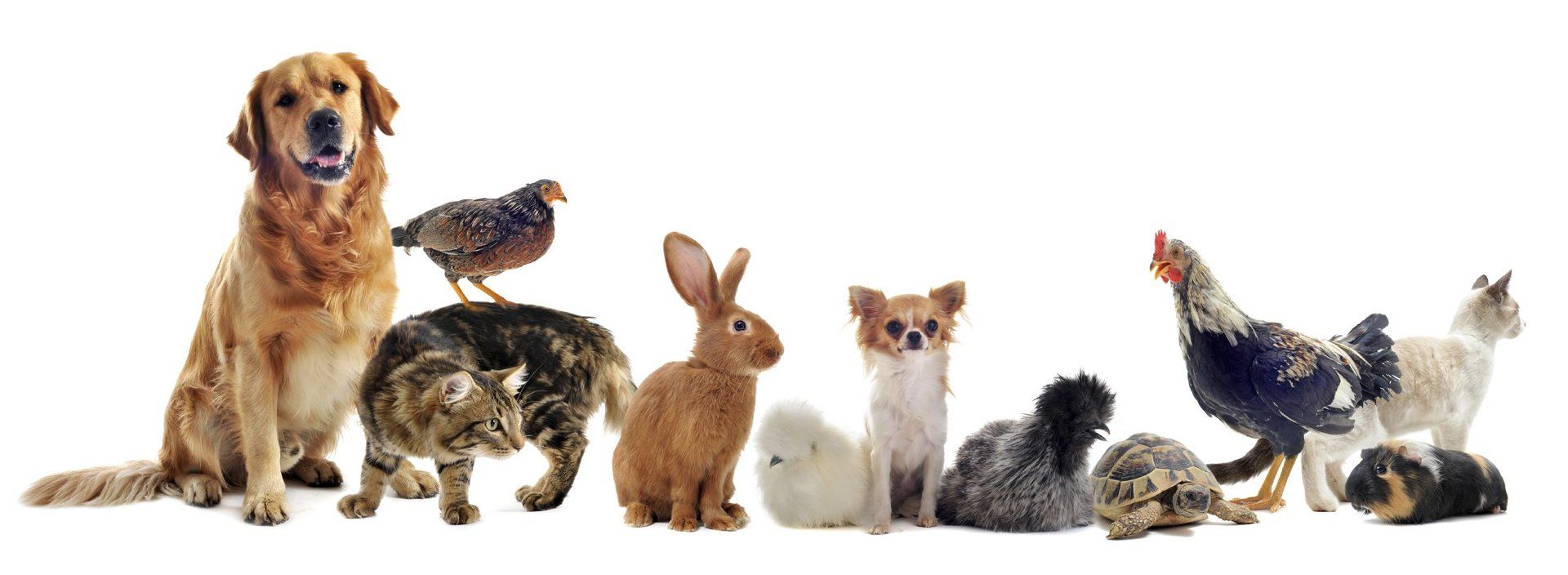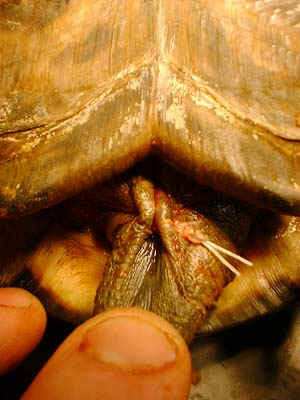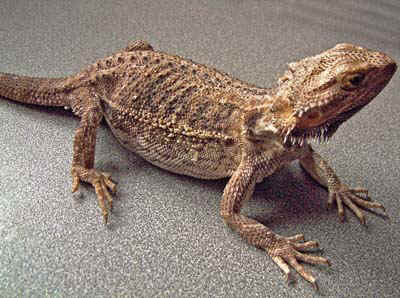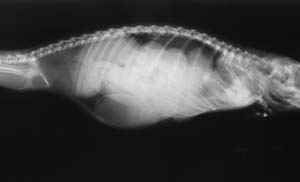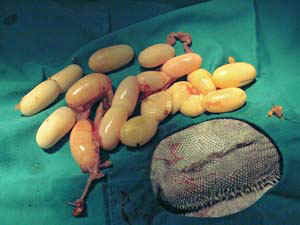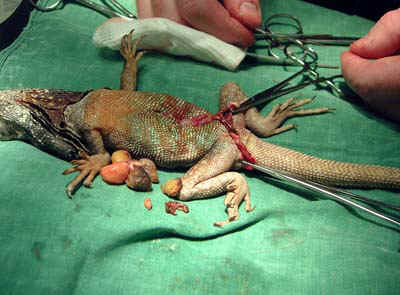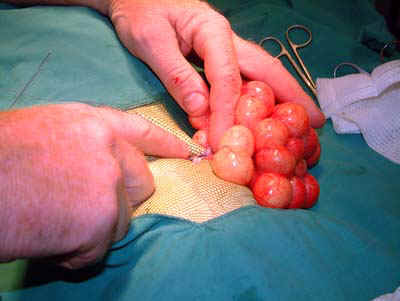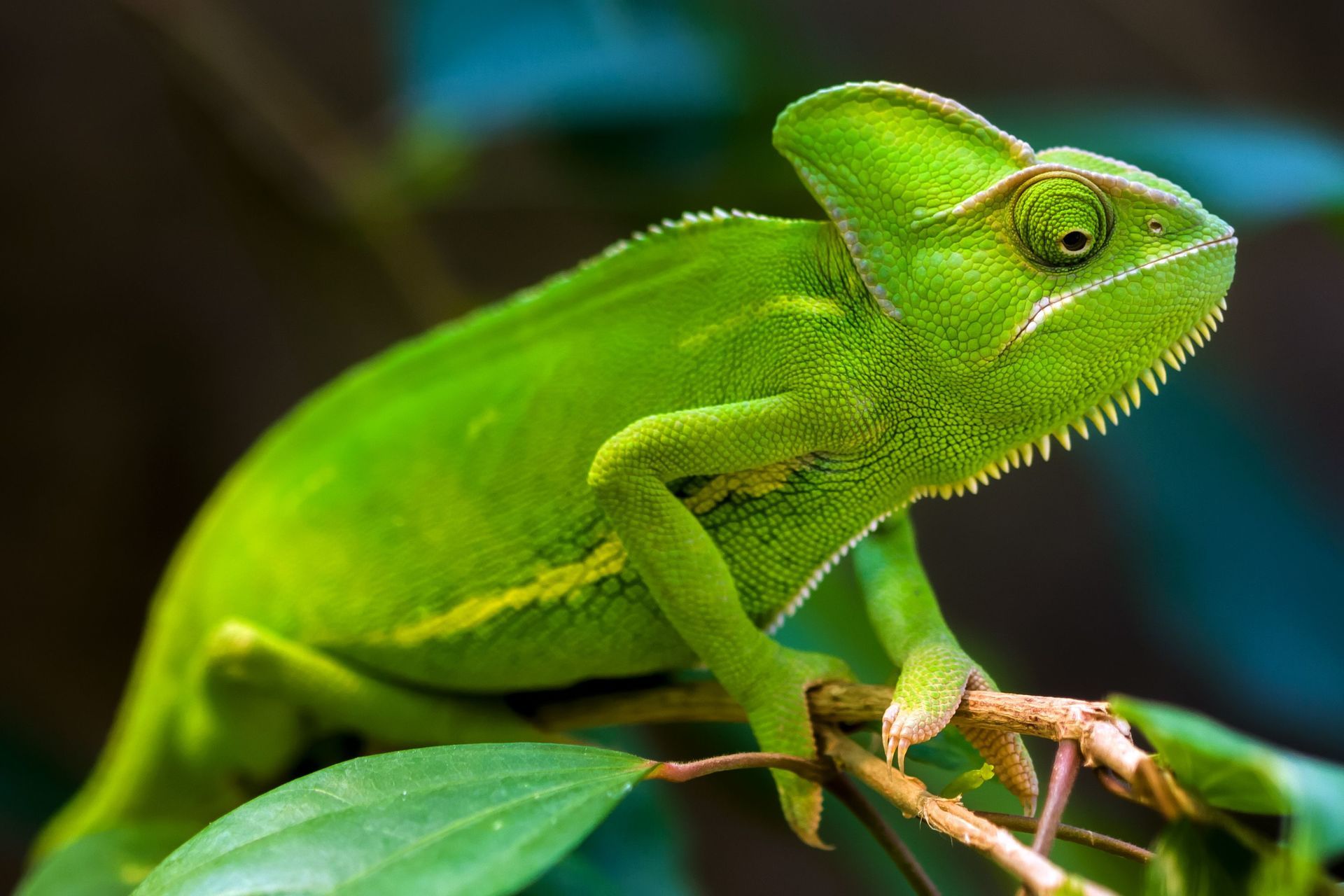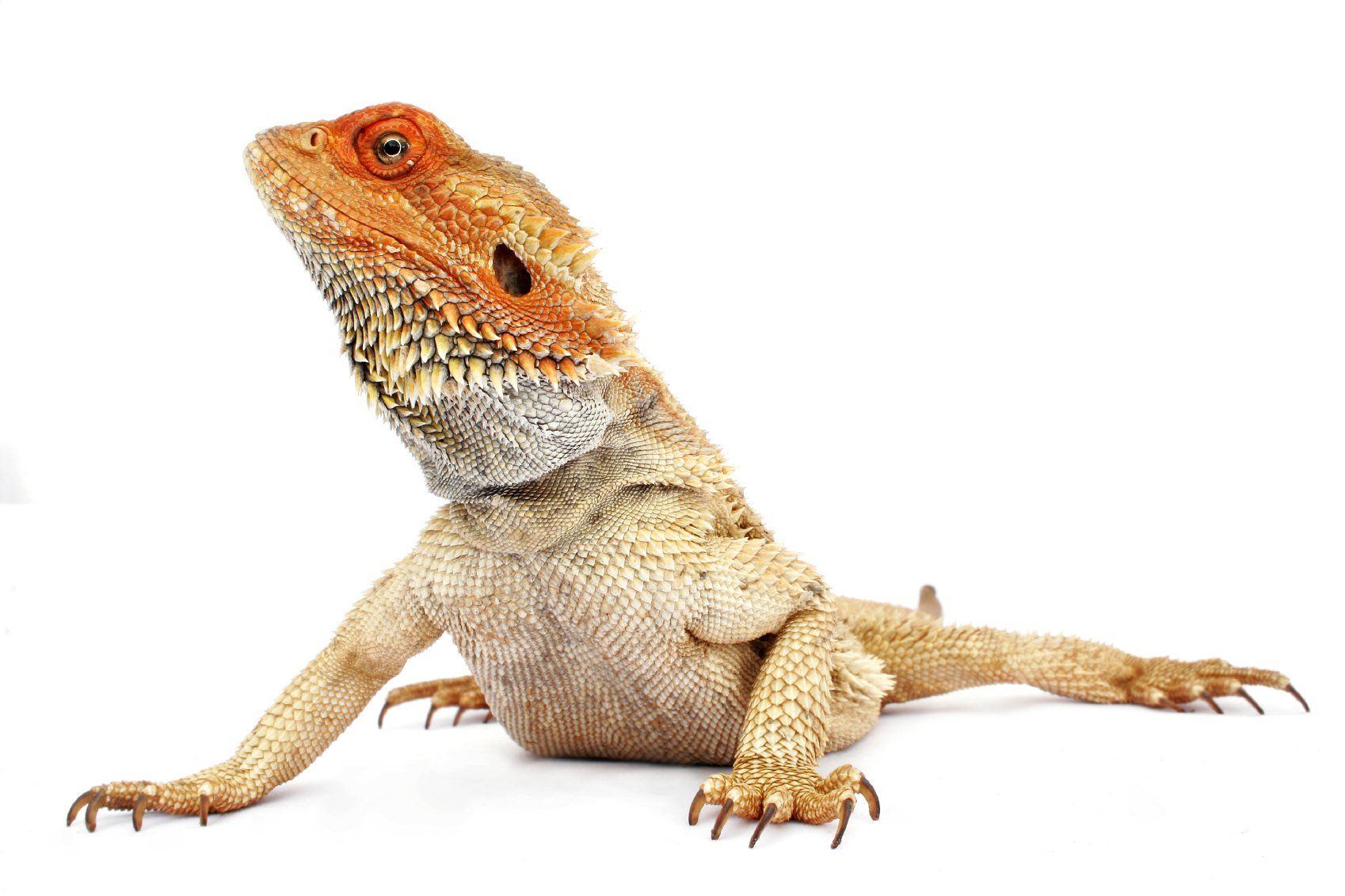REPRODUCTIVE PROBLEMS
MALES - PENILE PROLAPSE
Most common problem in males is a prolapse of the penis in chelonians or one or both of the hemipenes in lizards and snakes. It may reflect environmental problems such as early MBD but is often just due to excessive randiness.
As with other prolapses (see rectal prolapses under gastrointestinal problems) as long as the organ has not become gangrenous or too traumatised it can be reduced, replaced and temporarily secured with a mattress suture. If too traumatised, the penis/hemipene can be amputated; the penis in reptiles is a reproductive organ only and has no role in excretion.
The sequence of surgery show removal of an egg from the oviduct, followed by repair of the oviduct and finally repair of the coelomic musculature and skin.
There were 10 eggs present, unfortunately they were so adhered to the oviducts that it proved impossible to "milk them" down to remove them from a single incision and several incisions (and incisional repairs) were required to complete the procedure.
It took 2 vets over 3 hours to complete the operation. Fortunately Laura made a complete recovery.
With some snakes, you sometimes get a single oversized or inflexible egg can become impacted at the cloaca and cannot pass. Sometimes warm baths with or without oxytocin injections will enable passage but if not passed within a few days then removal is required. In these cases, an alternative to a full surgical removal as shown in the sequence below is to aspirate the egg in order to collapse it and enable it to be passed. The procedure can usually be performed under ketamine sedation or anaesthesia.
The sequence above shows aspiration of impacted egg in a corn snake. She had previously delivered several eggs 2 days previously but this one had stopped at the cloaca and normal medical management had refused to deliver it. Impacted eggs often contain very thick (inspissated) material not easily aspirated and in this case a 16g needle was required to aspirate the contents. Antibiotic cover should be provided after the procedure.
MALES - PENILE PROLAPSE
Most common problem in males is a prolapse of the penis in chelonians or one or both of the hemipenes in lizards and snakes. It may reflect environmental problems such as early MBD but is often just due to excessive randiness.
As with other prolapses (see rectal prolapses under gastrointestinal problems) as long as the organ has not become gangrenous or too traumatised it can be reduced, replaced and temporarily secured with a mattress suture. If too traumatised, the penis/hemipene can be amputated; the penis in reptiles is a reproductive organ only and has no role in excretion.
The sequence of surgery show removal of an egg from the oviduct, followed by repair of the oviduct and finally repair of the coelomic musculature and skin.
There were 10 eggs present, unfortunately they were so adhered to the oviducts that it proved impossible to "milk them" down to remove them from a single incision and several incisions (and incisional repairs) were required to complete the procedure.
It took 2 vets over 3 hours to complete the operation. Fortunately Laura made a complete recovery.
With some snakes, you sometimes get a single oversized or inflexible egg can become impacted at the cloaca and cannot pass. Sometimes warm baths with or without oxytocin injections will enable passage but if not passed within a few days then removal is required. In these cases, an alternative to a full surgical removal as shown in the sequence below is to aspirate the egg in order to collapse it and enable it to be passed. The procedure can usually be performed under ketamine sedation or anaesthesia.
The sequence above shows aspiration of impacted egg in a corn snake. She had previously delivered several eggs 2 days previously but this one had stopped at the cloaca and normal medical management had refused to deliver it. Impacted eggs often contain very thick (inspissated) material not easily aspirated and in this case a 16g needle was required to aspirate the contents. Antibiotic cover should be provided after the procedure.
Prolapsed penis tortoise, reduced and temporarily secured with a mattress suture
FEMALES - EGG BINDING
This is a common problem in all 3 groups of reptiles. It occurs in 3 forms.
Preovulatory - This occurs mostly in lizards like iguana and bearded dragon. the ovaries produce more and more eggs waiting to be fertilized but if the female is not mated they just build up in numbers eventually filling the coelom and putting pressure on other organs like the intestines.
Postovulatory - This occurs when fertile (or infertile) eggs are ready to be laid but are not laid- sometimes because the female cannot find a site she is happy to lay them in.
Chronic - If the female survives either of the above problems eggs will remain in the abdomen; they will frequently dry out and inspissate. As long as they remain intact, they cause no problem but they frequently rupture causing an acute and usually fatal coelomitis.
With any of these forms animals usually present as listless and inappetant and in various degrees of emaciation/dehydration depending on how long the condition has been progressing. Diagnosis can usually be made by palpation in lizards and snakes but usually requires radiography in tortoises. When using radiography in lizards the technique of aero-peritoneum (injection of a small amount of air into the coelomic cavity) is useful.
A bearded dragon presented off food and not well for about 2 weeks.
Note the emaciated limbs and visible ribs and pelvic bones but a large abdomen.
Note the emaciated limbs and visible ribs and pelvic bones but a large abdomen.
Eggs are visible on the plain radiograph
But much more obvious when 10 ml air was injected into the coelom (aeroperitoneum).
18 eggs plus the ovaries and oviducts were removed at surgery.
With this frilled dragon with the chronic form of the disease note the shrunken deformed
and discoloured eggs removed. These had probably been present for weeks or months.
and discoloured eggs removed. These had probably been present for weeks or months.
With the post-ovulatory form of the disease (the form most often seen in snakes and chelonians) medical management can sometimes result in the eggs being laid. Ensuring the right environment for egg laying together with injections of Calcium and oxytocin will sometimes result in the eggs being laid. Medical management is usually successful in Chelonia, often successful in smaller snakes but often unsuccessful with lizards.
With the pre-ovulatory and chronic forms of the disease, and post-ovulatory disease not responsive to medical management, surgical removal is the only method of treatment.
The following 2 images show the surgical removal of pre-ovulatory eggs in a green iguana.
With the pre-ovulatory and chronic forms of the disease, and post-ovulatory disease not responsive to medical management, surgical removal is the only method of treatment.
The following 2 images show the surgical removal of pre-ovulatory eggs in a green iguana.
This sequence shows "Laura" and eggbound Burmese Python. Several weeks and treatment with calcium and oxytocin failed to resolve her problem. Radiographs were not strictly needed to establish the problem but were used to count how many eggs were present.
